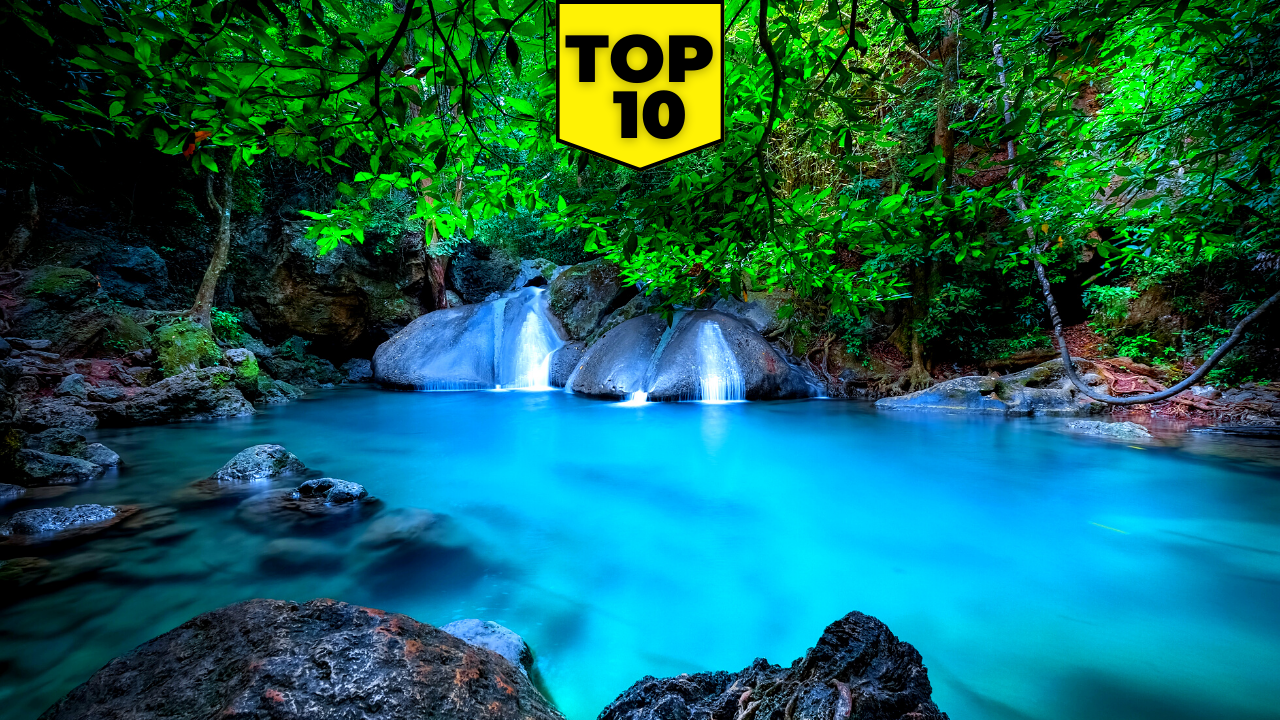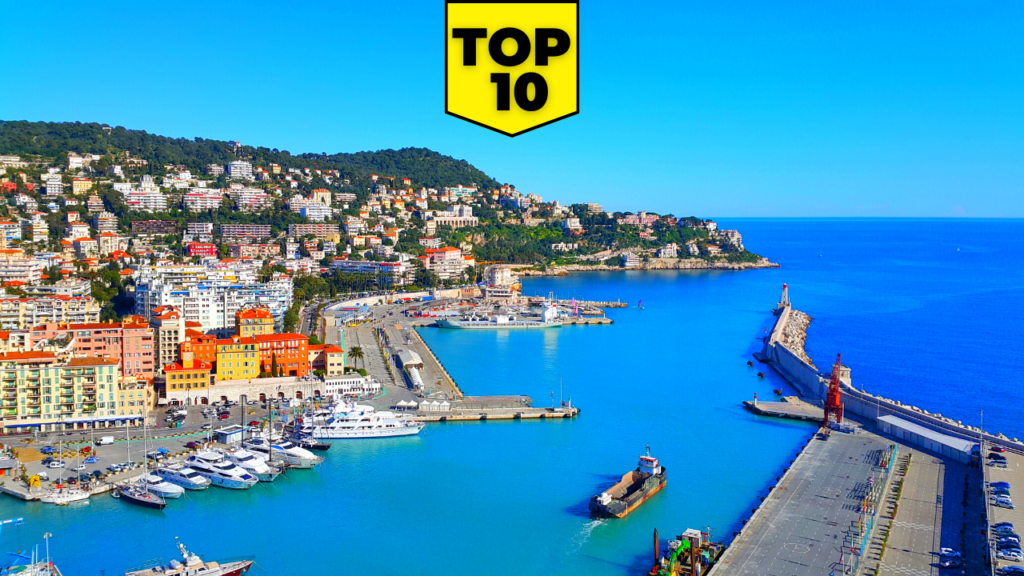
It is easy to understand why Impressionist painters were drawn to Nice. The second-largest French city on the Mediterranean coast is situated at the foot of the French Alps on the French Riviera, on France’s southeast coast where the Mediterranean Sea is.
The 19th-century houses on Nice’s promenades and boulevards, the city’s Italianate old district, and the rugged natural terrain that offers innumerable breathtaking vantage points are all sources of the city’s attractiveness.
Let’s dive right in! Here are the top 10 things to do in Nice, France.
Table of contents
- 10. Place Garibaldi & Le Petit Marais
- 9. Jardin Albert 1ER
- 8. Musee Matisse
- 7. Musee Des Beaux-Arts
- 6. Monastère Notre-Dame-de-Cimiez
- 5. Cathédrale Orthodoxe Russe Saint-Nicolas
- 4. Musee National Marc Chagall
- 3. Promenade des Anglais
- 2. Parc De La Collinne Du Chateau Or Castle Hill Park
- 1. Vieille Ville Or Old Town
- Conclusion
10. Place Garibaldi & Le Petit Marais
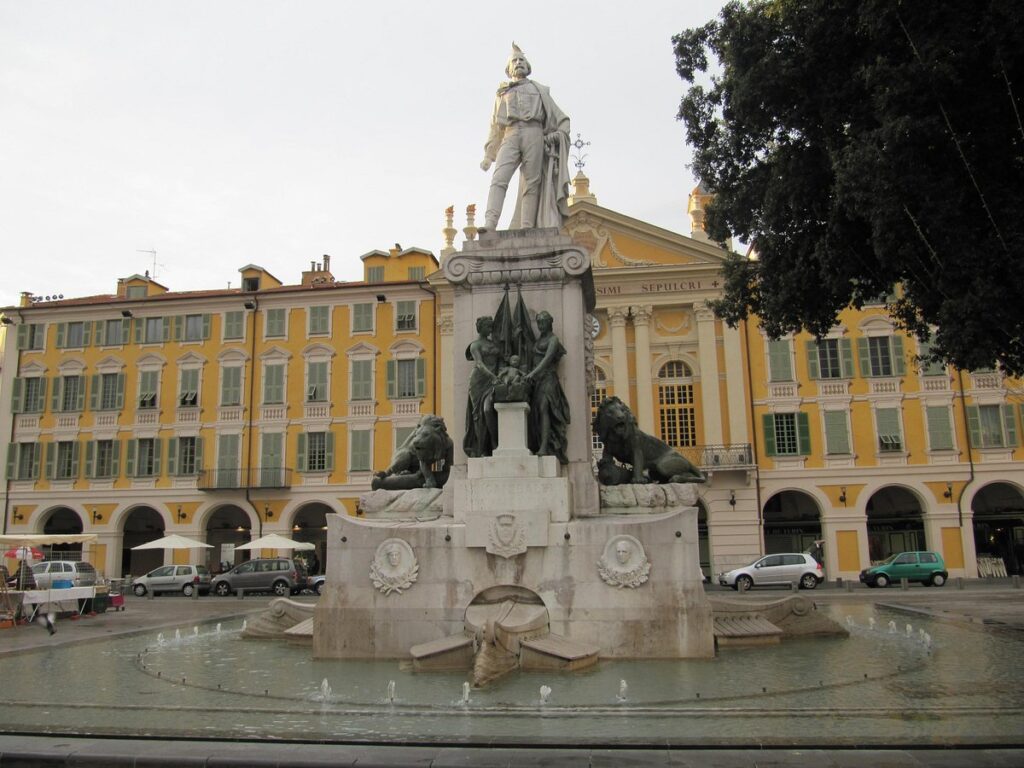
The Place Garibaldi is one of Nice’s biggest squares and is only a short stroll from the Musée d’Art Moderne et d’Art Contemporain.
The late 18th-century-designed plaza, which is surrounded by imposing Baroque structures, today has a modern metropolitan atmosphere as it sits at the intersection of four heavily used roads and is traversed by a tramline.
A statue of the well-known Nice resident and Italian liberation warrior Garibaldi graces the square. Le Petit Marais, one of Nice’s hottest new districts, is located between Place Garibaldi and the port. The restaurants and nightlife in this lovely neighborhood are well-known.
The Place du Pin, the center of the restaurant district of Le Petit Marais, is a bustling gathering place. The Rue Bonaparte is close by and is teeming with fast food joints, cafés, pastry shops, specialized supermarkets, and gourmet food suppliers.
9. Jardin Albert 1ER
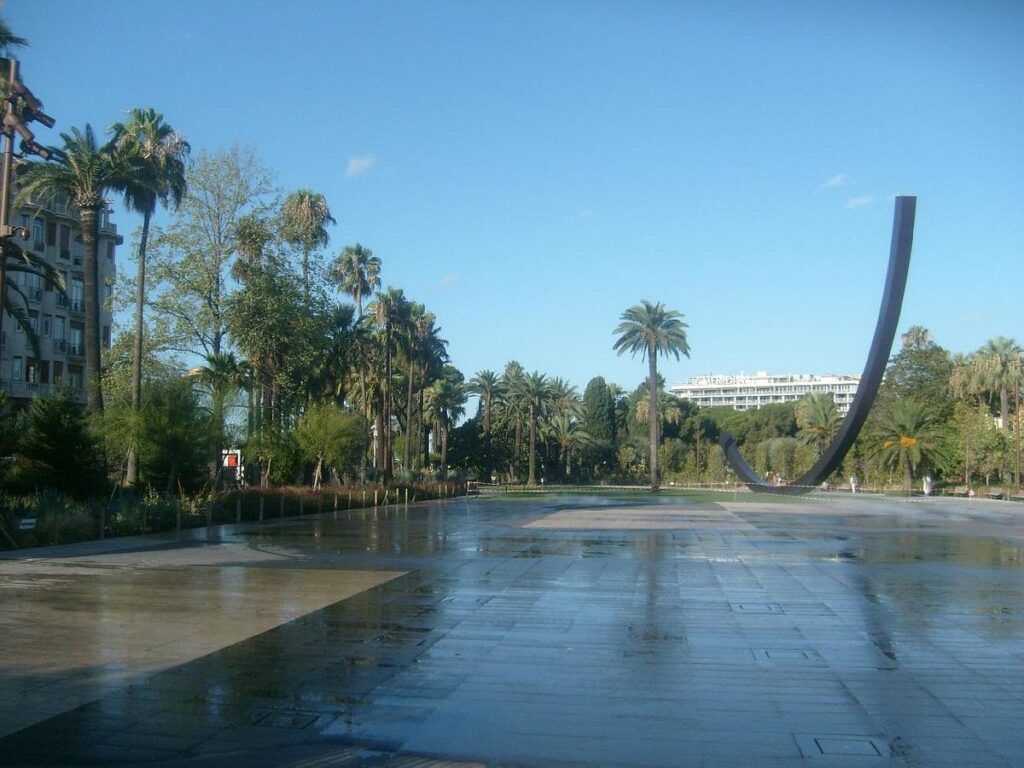
This lush park is a well-liked location for relaxation and leisurely strolls thanks to its shady trees, wide lawn, fountains, and scented roses. The park is especially beloved by families with young children because of its playgrounds and vintage carousel.
The Théâtre de Verdure, a charming outdoor theater, is located in the Jardin Albert 1er and is encircled by palm and pine trees. This outdoor facility hosts music events during the spring and summer, including rock festivals and appearances by well-known rock bands. The garden is located between the Avenue de Verdun and the Promenade des Anglais.
The busy Avenue Jean Médecin, one of Nice’s main retail avenues, is only a short stroll from the garden.
8. Musee Matisse
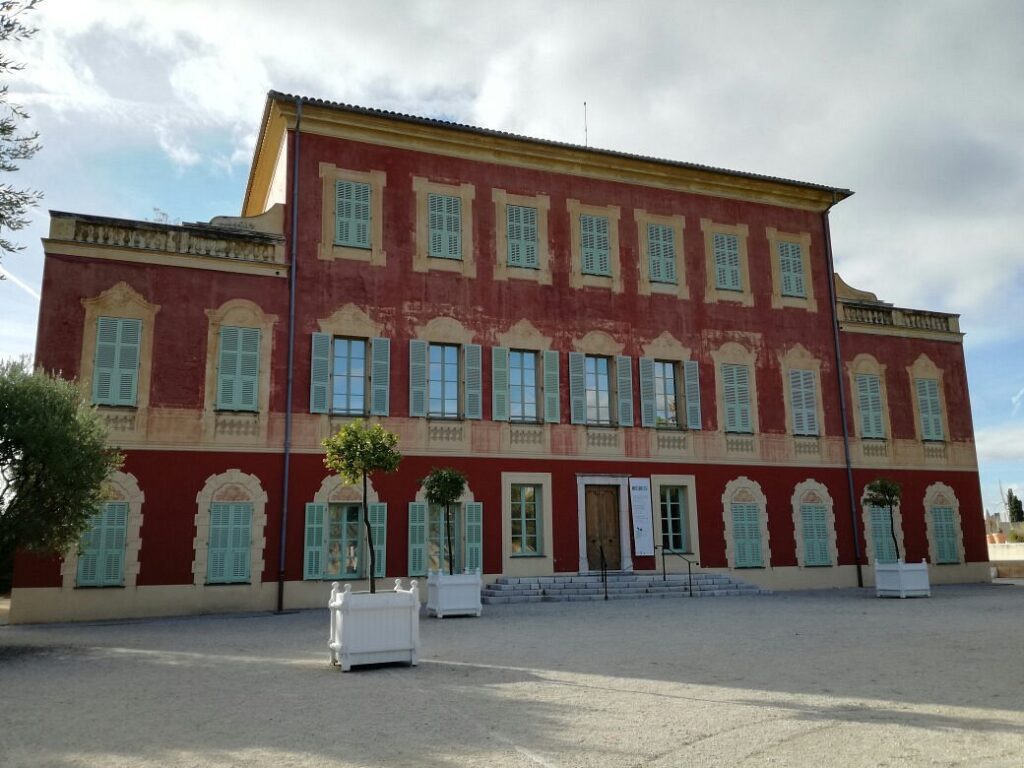
The Musée Matisse, which is perched on the hill of Cimiez, is a must-visit destination for art enthusiasts. This charming museum is housed in a magnificent Italianate garden that surrounds a former Genoese palace. A wide range of Matisse’s paintings is represented in the permanent collection.
There are also intriguing designs for the decorations of the Chapel in Vence, along with 31 paintings and 57 sculptures—almost all of Matisse’s sculptures to date. The complete body of work offers a comprehensive glimpse of the artist’s creative process and brilliance.
Temporary exhibits, cultural activities, and art workshops are also held in the museum. The beautiful setting of the museum is another attraction. There are gardens and an olive grove on the property.
7. Musee Des Beaux-Arts

The Musée des Beaux-Arts, located in the Les Baumettes area of Montreal, houses a sizable collection of works from the 16th to the 20th centuries.
In the previous private residence, Elizaveta Vasilievna Kochubey, a Russian Princess, constructed the Musée des Beaux-Arts de Nice in 1878. Named for the artist Jules Chéret who lived and worked in Nice during his final years, the museum opened as the “Palais des Arts Jules Chéret” on January 7, 1928.
A collection of artwork from the previous four centuries is kept in the museum. These include paintings by Chéret and other French Riviera-based artists including Alexis Mossa and his son Gustav-Adolf Mossa, who served as the museum’s curators for a long time.
The little museum houses ceramic works by Pablo Picasso in addition to sculptures by Jean-Baptiste Carpeaux, François Rude, Michel de Tarnowsky, and Auguste Rodin.
6. Monastère Notre-Dame-de-Cimiez
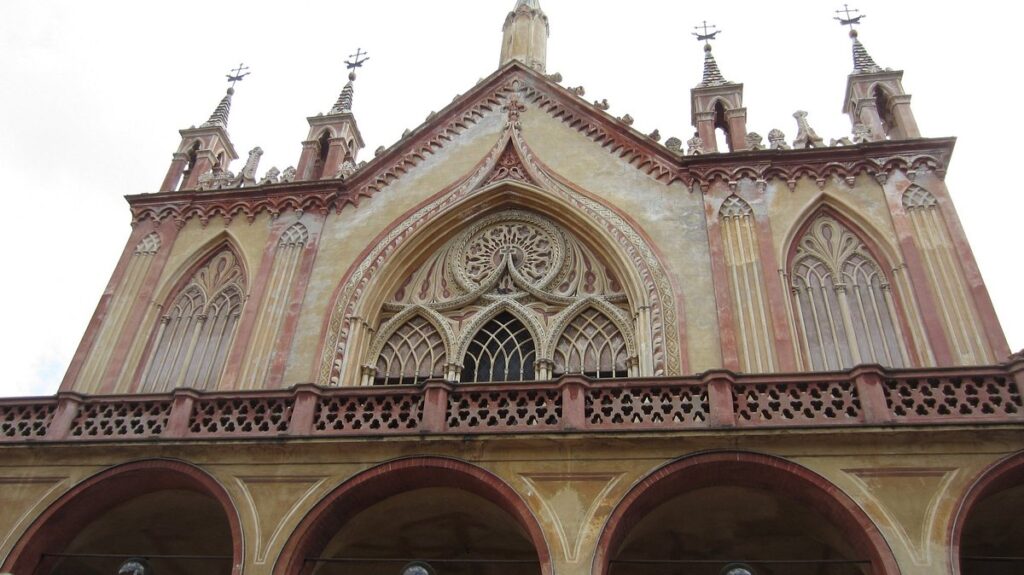
The Monastère Notre-Dame-de-Cimiez is perched above the ancient Cemenelum ruins in the chic Cimiez district, close to the Matisse Museum. Roman baths and an amphitheater are still visible beneath the monastery.
The monastery, which was founded by the Benedictines in the beginning, was taken over by the Franciscans in the sixteenth century, and it was expanded in the seventeenth. Its restoration, done in 1850 using neo-Gothic designs, is what gives it its current aspect.
A museum chronicling the history of the neighborhood’s Franciscan monks since the 13th century is located inside the Cimiez Monastery, which is now recognized as a historical monument.
The museum also houses a collection of religious artwork and frescoes. Three works of art by the renowned Italian painter Louis Bréa are shown in the monastery’s 15th-century church.
The lavish grounds of the monastery, which are manicured with Mediterranean trees and a rose garden, are lovely for visitors to stroll through. Views of the town and the sea can be seen in great detail from vantage points throughout the garden.
5. Cathédrale Orthodoxe Russe Saint-Nicolas
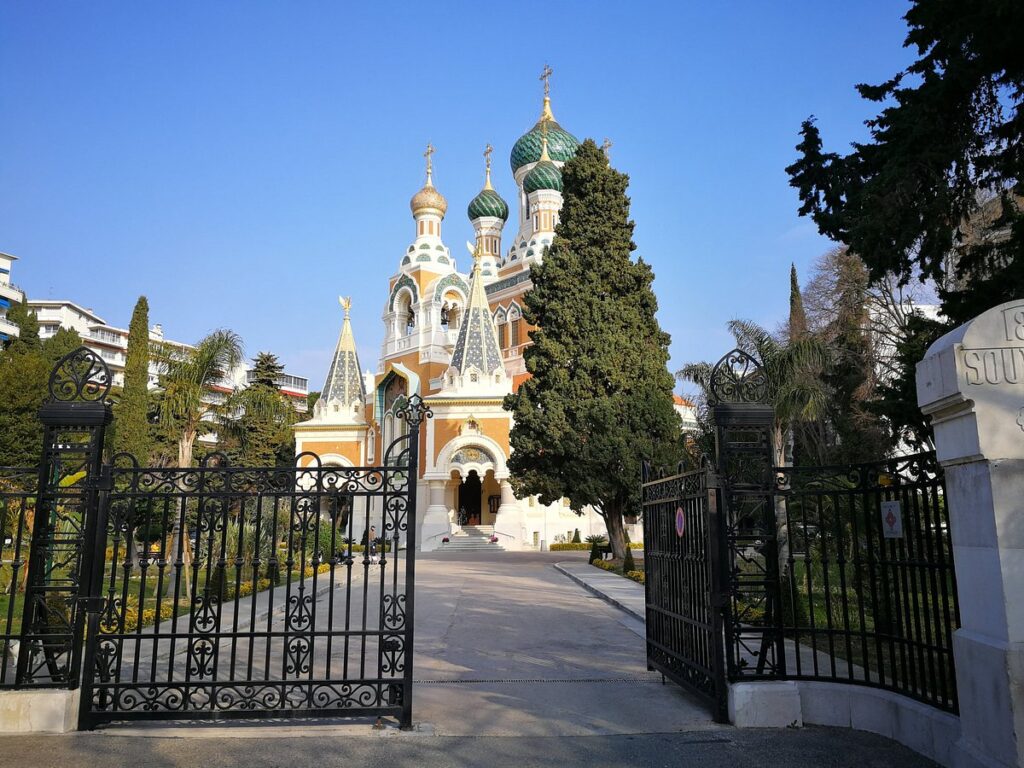
The Cathédrale Orthodoxe Russe Saint-Nicolas, built-in 1912 by Tsar Nicholas, is regarded as one of the most stunning Orthodox cathedrals outside of Russia.
To meet the religious requirements of the expanding Russian population in the city, Tsar Nicholas II, the tragic head of the Romanov family, ordered the construction of the St. Nicholas Russian Orthodox Cathedral in the early 20th century.
From its location on the appropriately named Avenue Nicholas II, the church’s onion domes, vibrant colors, and intricate embellishments are difficult to miss. The interior of the cathedral, which was built in Muscovite architecture and is lavishly decorated, resembles a jewel box because of its decorative icons, paintings, and gilded iconostasis.
The cathedral is still used for religious purposes. Visitors are welcome, but they must abide by the following rules: Men must cover their shoulders. Women should avoid wearing small skirts and shorts, cover their shoulders, and cover their heads if possible.
The cathedral also offers guided tours in your choice of language either English, French, or Japanese.
4. Musee National Marc Chagall
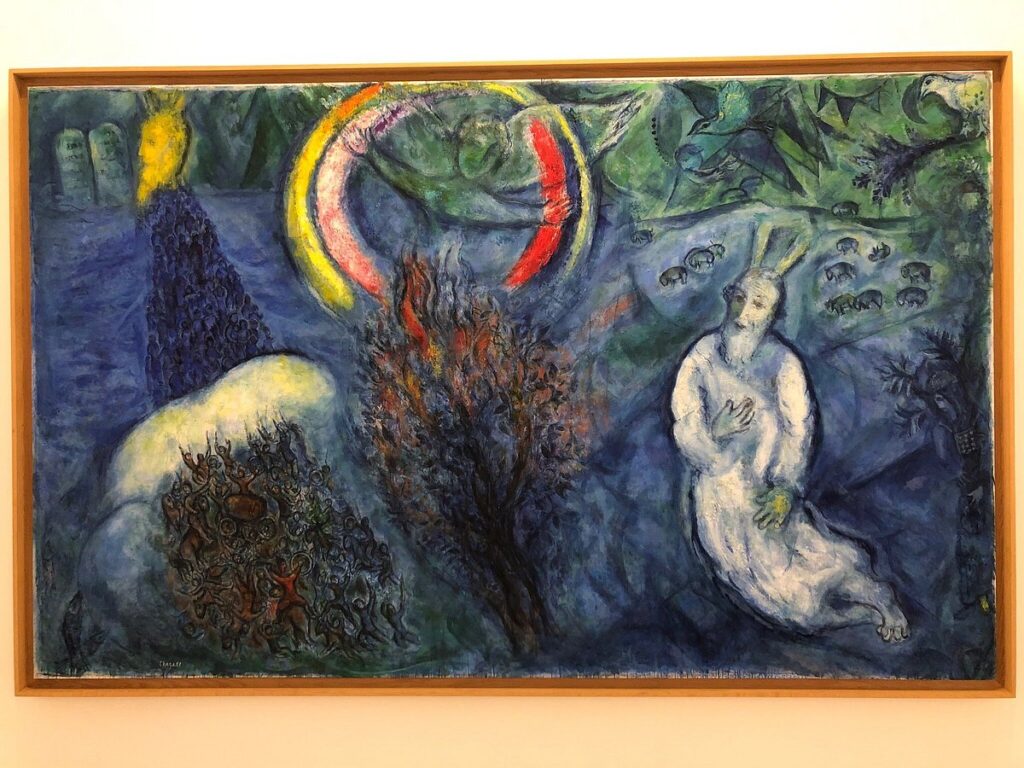
Near Nice’s historic district, on Cimiez hill, is where you’ll find the Chagall Museum. The structure, which became publicly accessible in 1973, was created by French architect André Hermant, a former Auguste Perret associate, under the rigorous direction of Chagall, who resided nearby in the commune of Saint-Paul de Vence. The collection’s focal point pieces were provided by the artist, who also contributed directly to the design of the building’s ornamental elements.
This museum will excite Marc Chagall admirers with its impressive collection of artwork with biblical themes. The collection includes a huge number of paintings made by Chagall over the course of his life as well as 12 substantial works using Old Testament illustrations.
There is lovely greenery all around the museum. Olive trees, cypress trees, oaks, and Mediterranean plants are used in the natural landscaping to create the appearance of a Garden of Eden. Since agapanthus flowers blossom in early July, just before Marc Chagall’s birthday, they were planted there.
3. Promenade des Anglais
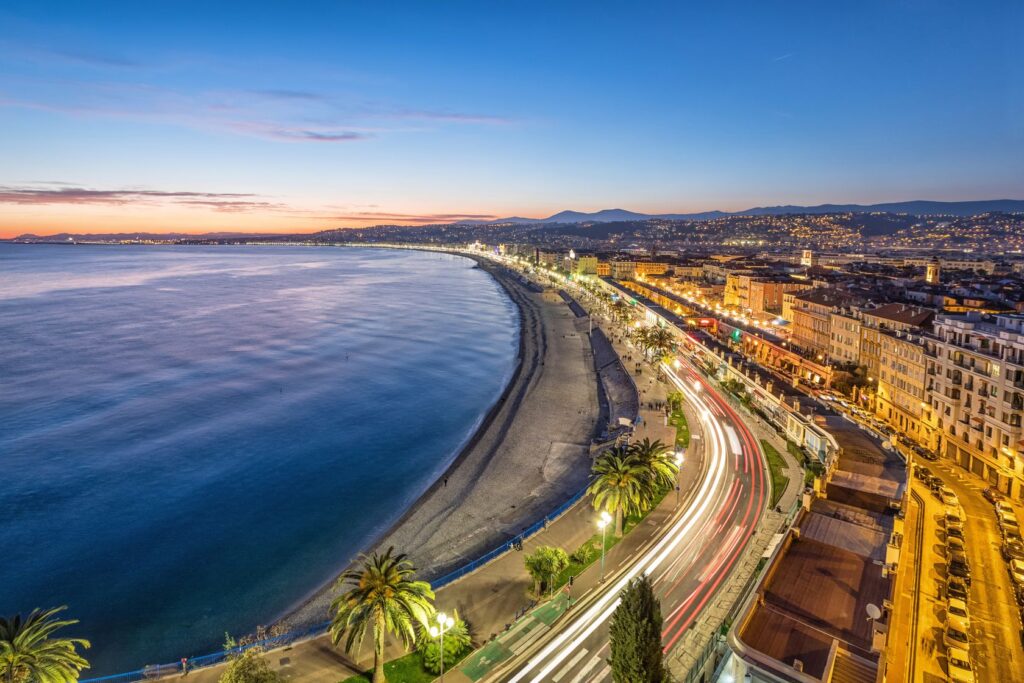
The Promenade des Anglais, Nice’s most famous avenue, is a stunning pedestrian mall that hugs the contours of the Baie des Anges beaches. This storied beachfront avenue is surrounded by beautiful gardens and is lined with planted palm palms.
The Promenade des Anglais has a road for cars, a bicycle lane, and a sidewalk/esplanade for pedestrians alone. The Promenade des Anglais was created by Englishman Reverend Lewis Way in 1820 at his own expense as a modest footpath. In 1931, it received two separate roadways, which significantly improved it.
The Duke of Connaught, the son of Queen Victoria at the time, ceremonially opened the Promenade des Anglais. The Palais de la Méditerranée theater and the beautiful Villa Masséna house, both located at 65 Rue de France, have graced the Promenade des Anglais since the Belle Epoque.
The Villa Masséna is surrounded by gorgeous Mediterranean gardens and is home to the Musée Masséna art collection, which features graphic arts, antiquities, and 19th-century landscape paintings.
Today, underground tunnels have been used to divert traffic from the roads, creating a pedestrian area where people enjoy taking strolls. Bicyclists and skateboarders also enjoy the Promenade des Anglais’s popularity.
2. Parc De La Collinne Du Chateau Or Castle Hill Park
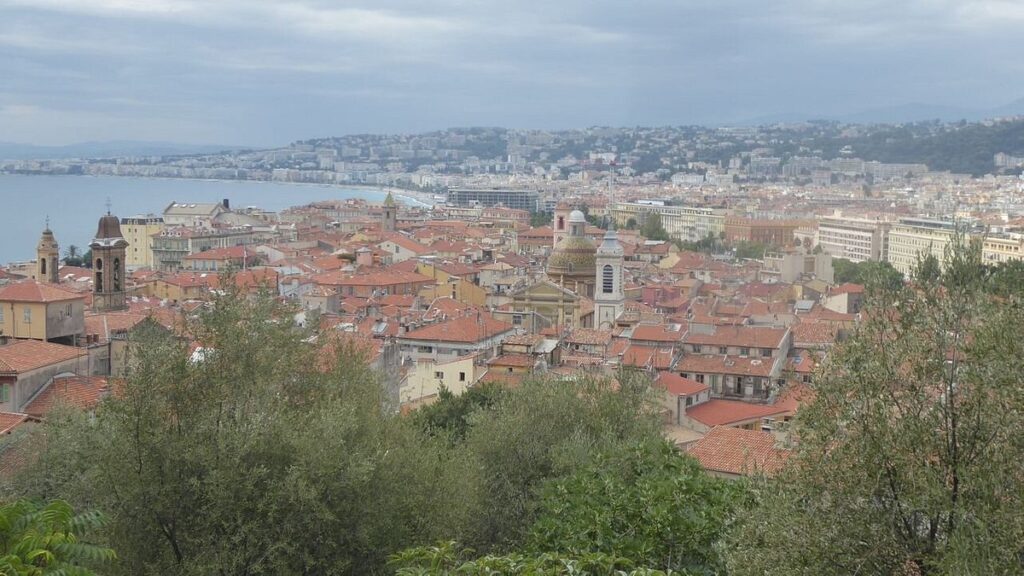
The first part of Nice to be settled by the Greeks was on Castle Peak, a hill overlooking the Nice shoreline, two thousand years ago. The citadel, which was formerly thought to be invincible, was destroyed by French King Louis XIV’s army in 1706. The land is now totally designated as a park.
This lush sanctuary has a waterfall, luscious palm trees, and winding walkways that are perfect for leisurely strolls. Amazing panoramic views over the Baie des Anges, the Vieille Ville, and the Nice harbor are available from a number of locations. There are two cafés that have outside terraces where you may get food, drinks, snacks, and ice cream.
The Parc de la Colline du Château also has a playground for kids, benches, and shaded lawns perfect for picnics. The Colline du Château is accessible to guests via an escalator or Art-Deco lift from Place Garibaldi or on foot from Old Town Nice. Another choice is to board the tourist train, Le Petit Train Electrique de Nice, which leaves from Quai des États-Unis.
1. Vieille Ville Or Old Town
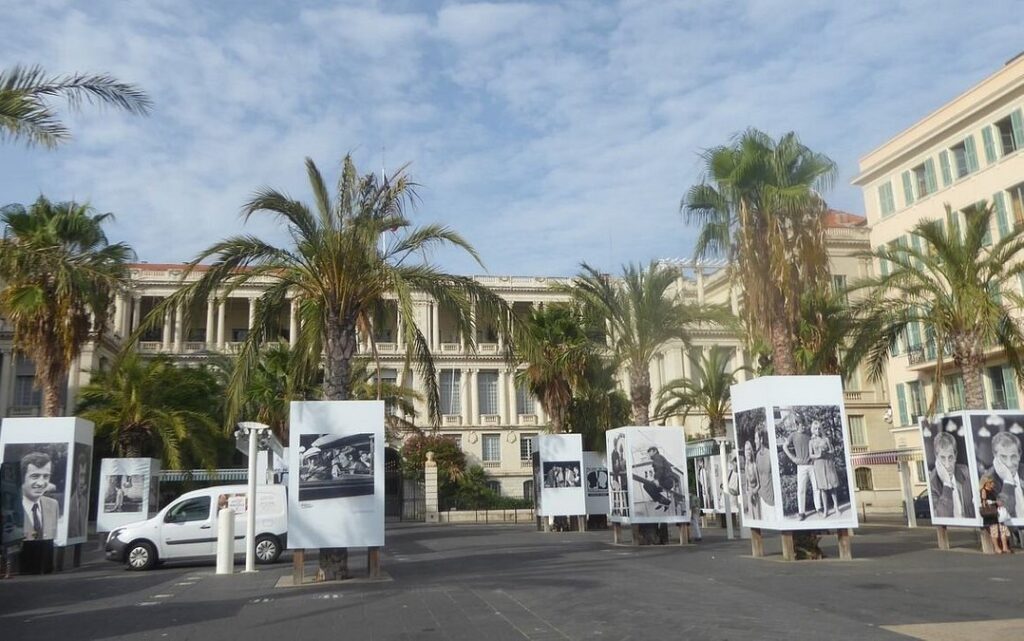
The charming Old Town of Nice has a vibrant atmosphere evocative of Italy with its labyrinth of tiny lanes and cobblestone streets.
The Vieille Ville, often known as “Babazouk,” is bordered by wide boulevards such the Jardin Albert I, Place Masséna, and Promenade du Paillon. It starts at the western end of Castle Hill.
In many ways, the Vieux Nice sometimes referred to as the Old Town, is the most colorful part of the entire city. There are many small streets that can be explored for hours on end, and most of them lead to shops, fantastic restaurants, or art exhibits.
The paint contains a significant amount of pastels. The villagers still hang their clothes out on long clotheslines across the street to add even more romance to the design.
You truly get to see a piece of the real city here because this region used to be a very impoverished part of town, which adds to its attractiveness.
The Cathédrale Sainte-Réparate, named after the town’s patron saint, and the well-known Fenocchio ice cream shop are two other must-see sights.
Conclusion
These are our Top 10 Things To Do in Nice France.
Isn’t that nice that Paris isn’t the only charming city in France? France is the most visited country in the world, and although most of its tourists are attracted to Paris, which is also a beautiful city, there’s so much more to explore.
If you’re looking for a gorgeous city with fantastic weather, delicious food, and unforgettable scenery then Nice should be on your list.
Now I would like to hear your opinion about this list. Did you find any of our picks interesting? Which of these places would you consider exploring on your next visit to France? Let me know in the comments below.
Check out my YouTube channel if you would like to watch some of my other favorite picks.
If you would like to connect with me, send a suggestion, make a request or even just wanted to say hi, please shoot me a DM on Instagram. I’ll personally reply to you 🙂



